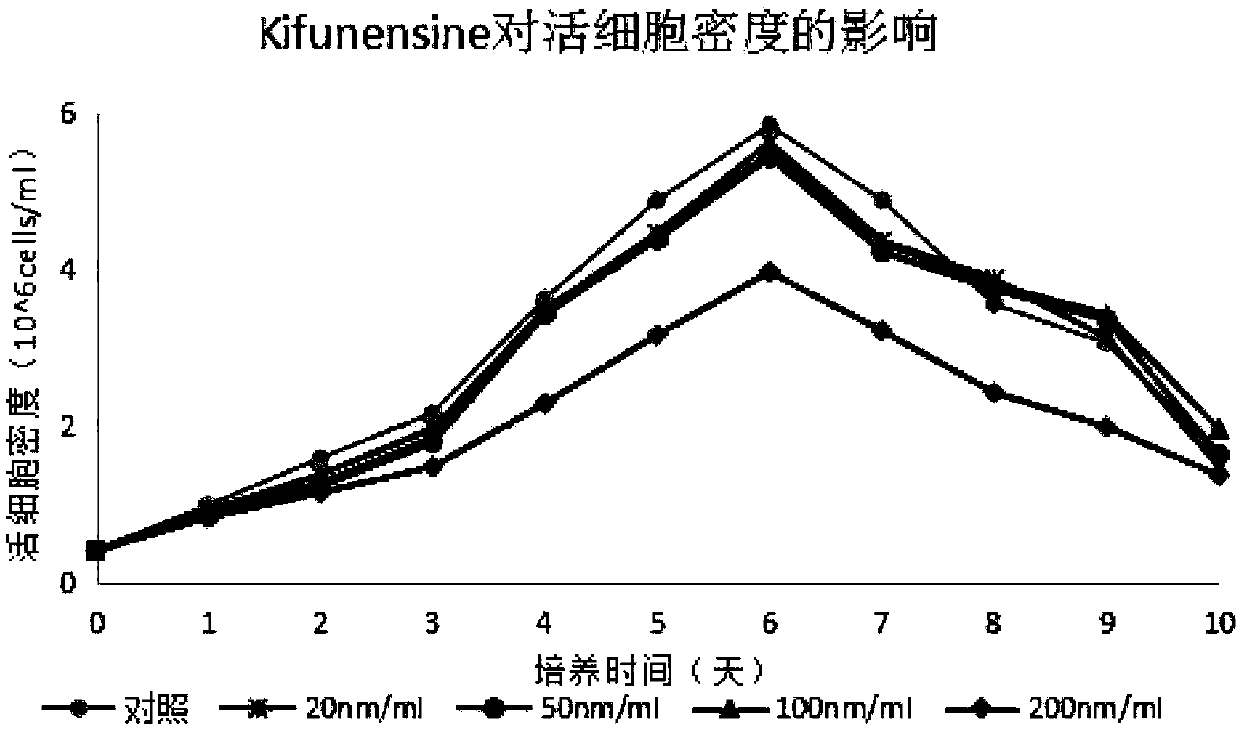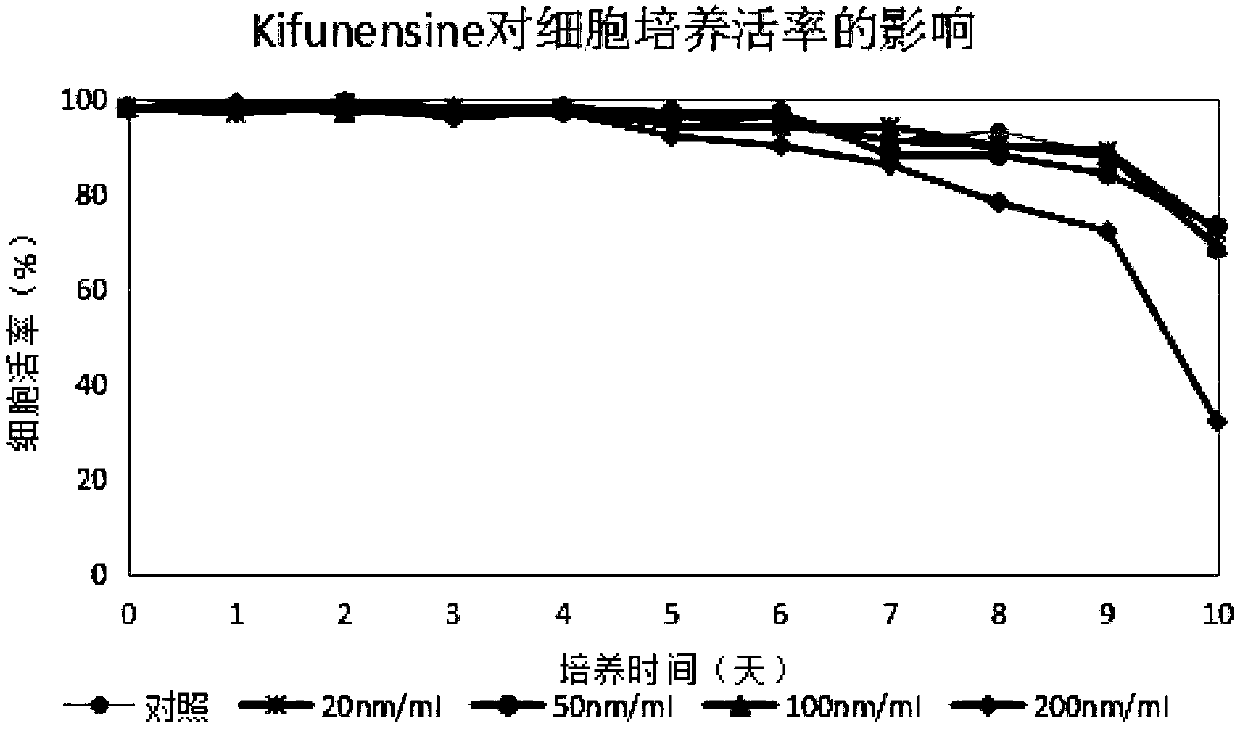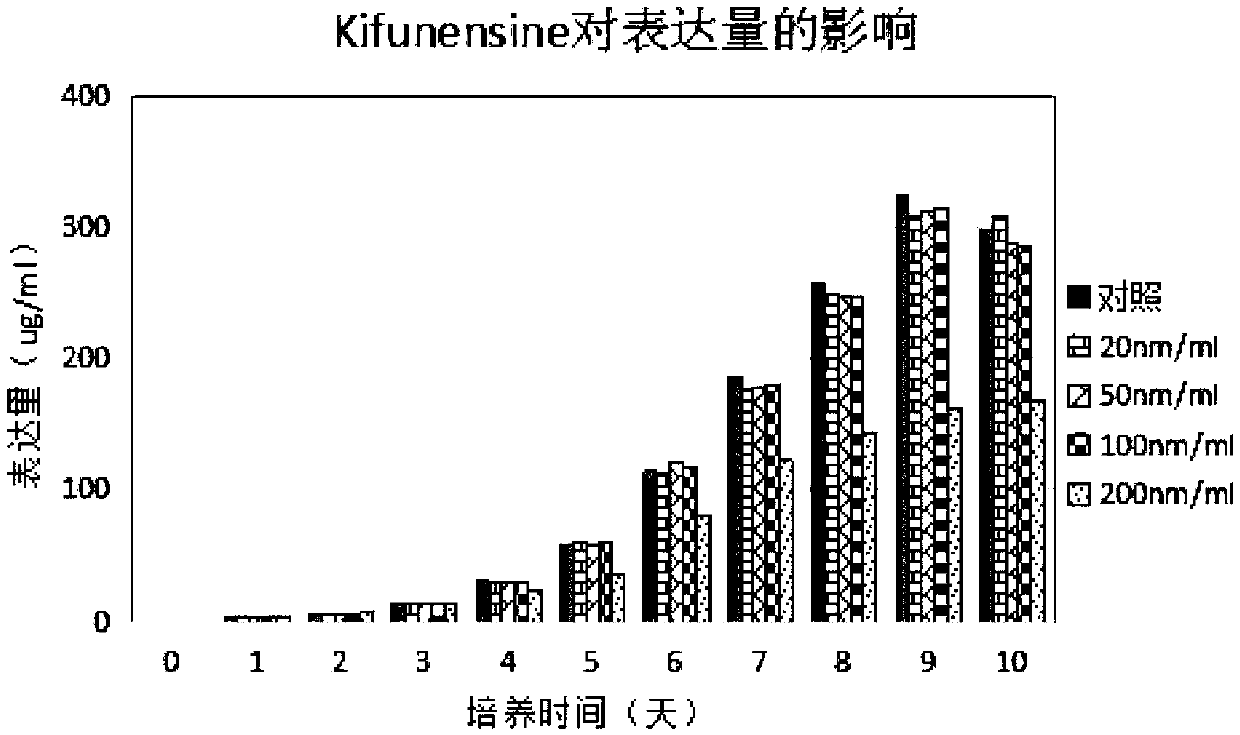Method for improving biological activity of anti-CD43 monoclonal antibody
A monoclonal antibody and biologically active technology, applied in the field of biopharmaceuticals, can solve the problems of poor chemotherapy selectivity, not widely used, and large side effects, and achieve the effects of simple operation, good therapeutic effect and low cost.
- Summary
- Abstract
- Description
- Claims
- Application Information
AI Technical Summary
Problems solved by technology
Method used
Image
Examples
Embodiment 1
[0025] The main purpose of this embodiment is to investigate the effect of different concentrations of Kifunensine on cell growth, so as to obtain the optimal concentration.
[0026] Take an anti-CD43 monoclonal antibody producing cell line (according to the method disclosed in Chinese patent ZL200680020846.5 to prepare anti-CD43 monoclonal antibody and produce it in CHO cells), centrifuge at 1000rpm for 5 minutes, and use Lonza commercial basal culture Based on PowerCHO-2, the precipitate was resuspended into the shake flask, and the viable cell density and viability were measured with a cell counter, and the shake flask was placed in a cell culture shaker to complete cell recovery. Cell subculture and expansion were carried out according to the subculture cycle once every 3 days, and the viable cell density and viability were recorded. After the cell viability reached more than 90% for 3 consecutive times, the cells were inoculated into a 250ml shake flask with an inoculation...
Embodiment 2
[0030] The main purpose of this example is to investigate the effect of different concentrations of Kifunensine on the expression level of anti-CD43 monoclonal antibody during batch culture, so as to optimize the optimal concentration.
[0031]Take an anti-CD43 monoclonal antibody producing cell line (according to the method disclosed in Chinese patent ZL200680020846.5 to prepare anti-CD43 monoclonal antibody and produce it in CHO cells), centrifuge at 1000rpm for 5 minutes, and use Lonza commercial basal culture Based on PowerCHO-2, the precipitate was resuspended into the shake flask, and the viable cell density and viability were measured with a cell counter, and the shake flask was placed in a cell culture shaker to complete cell recovery. Cell subculture and expansion were carried out according to the subculture cycle once every 3 days, and the viable cell density and viability were recorded. After the cell viability reached more than 90% for 3 consecutive times, the cells...
Embodiment 3
[0041] The main purpose of this example is to investigate the effect of Kifunensine on the biological binding activity of anti-CD43 monoclonal antibody.
[0042] Take an anti-CD43 monoclonal antibody producing cell line (according to the method disclosed in Chinese patent ZL200680020846.5 to prepare anti-CD43 monoclonal antibody and produce it in CHO cells), centrifuge at 1000rpm for 5 minutes, and use Lonza commercial basal culture Based on PowerCHO-2, the precipitate was resuspended into the shake flask, and the viable cell density and viability were measured with a cell counter, and the shake flask was placed in a cell culture shaker to complete cell recovery. Cell subculture and expansion were carried out according to the subculture cycle once every 3 days, and the viable cell density and viability were recorded. After the cell viability reached more than 90% for 3 consecutive times, the cells were inoculated into a 250ml shake flask with an inoculation volume of 60ml. The...
PUM
 Login to View More
Login to View More Abstract
Description
Claims
Application Information
 Login to View More
Login to View More - R&D
- Intellectual Property
- Life Sciences
- Materials
- Tech Scout
- Unparalleled Data Quality
- Higher Quality Content
- 60% Fewer Hallucinations
Browse by: Latest US Patents, China's latest patents, Technical Efficacy Thesaurus, Application Domain, Technology Topic, Popular Technical Reports.
© 2025 PatSnap. All rights reserved.Legal|Privacy policy|Modern Slavery Act Transparency Statement|Sitemap|About US| Contact US: help@patsnap.com



